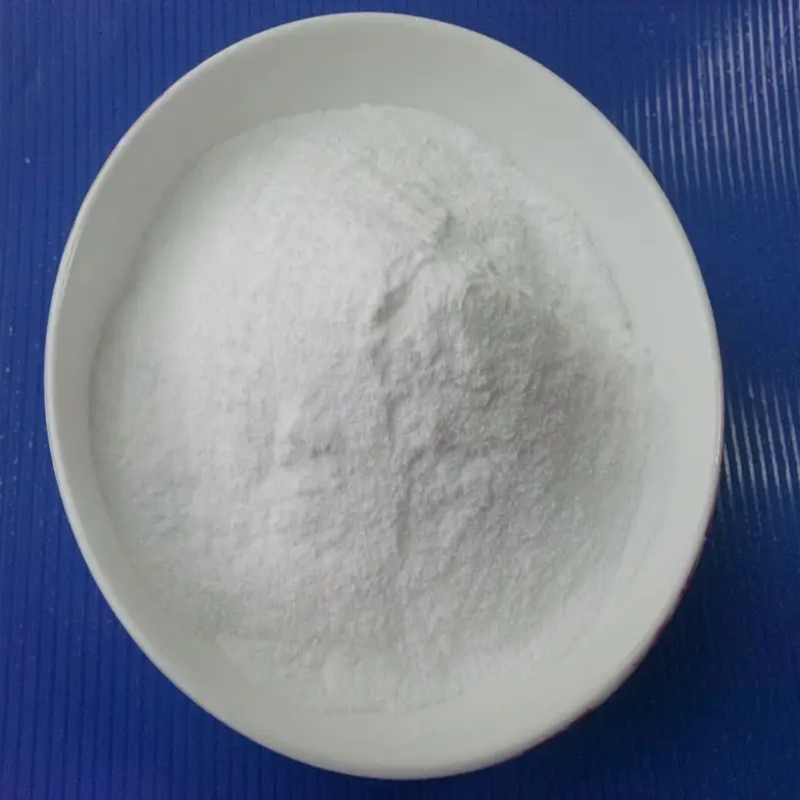-
Categories
-
Pharmaceutical Intermediates
-
Active Pharmaceutical Ingredients
-
Food Additives
- Industrial Coatings
- Agrochemicals
- Dyes and Pigments
- Surfactant
- Flavors and Fragrances
- Chemical Reagents
- Catalyst and Auxiliary
- Natural Products
- Inorganic Chemistry
-
Organic Chemistry
-
Biochemical Engineering
- Analytical Chemistry
- Cosmetic Ingredient
-
Pharmaceutical Intermediates
Promotion
ECHEMI Mall
Wholesale
Weekly Price
Exhibition
News
-
Trade Service
Written by - Huangdao Lord, Li Yifan is responsible for editing - Wang Sizhen, Fang Yiyi editing - Xia Leaf
Alzheimer's disease (AD) is a neurodegenerative disease
characterized by cognitive impairment, memory loss, and dementia.
Pathologically, AD is defined as amyloid plaques and neurofibrillary tangles
due to the accumulation of β amyloid and phosphorylated tau, respectively.
The diagnosis of AD now relies on clinical evaluation and information from imaging and biofluids designed to detect β amyloid and phosphorylated tau The presence of
proteins.
Positron emission tomography (PET) neuroimaging and cerebrospinal fluid (CSF) are the most commonly used AD biomarkers and enable accurate diagnosis of AD even in asymptomatic people
。 There is growing evidence that the accumulation of amyloid in the brain begins 20-30 years before clinically detectable cognitive impairment is observed, suggesting the presence of chronically asymptomatic AD patients
.
Although it is difficult to determine the exact timing of onset of this preclinical phase, it may be important to identify participants in the asymptomatic preclinical stage of the disease, as newly developed disease-modifying therapies may be primarily effective
during this asymptomatic period.
However, the high medical cost and low patient compliance of the existing technical means to diagnose asymptomatic individuals in the preclinical period require neuroimaging or cerebrospinal fluid extraction, making these two methods unfeasible
as routine screening tools in clinical settings.
Therefore, there is an urgent need to develop blood-based, cost-effective screening tools to detect asymptomatic AD patients in the population, which is why the search for preclinical blood-based biomarkers has become a major focus
.
While current biomarkers typically focus on the central nervous system, emerging evidence from genetic, clinical, cell biology, and animal studies suggests that abnormal systemic changes are not only secondary to brain dysfunction but may also affect AD progression, suggesting a two-way interaction between these brains and peripheral systems in AD It plays an important role in the natural history [1].
This interaction between the central nervous system and peripheral blood leukocytes may allow the detection of potential immune changes in AD in peripheral blood that may become blood biomarkers for AD
.
Therefore, it is theoretically possible to reflect lesions
in the brain by detecting peripheral indicators.
However, it is very difficult in practice, because there are thousands of possible biological indicators, and the discovery and verification of each indicator takes a long time, so how to quickly and accurately find effective markers has become a difficult problem
in front of researchers.
Gu Baijun's team from the Florey Institute of Neuroscience and Mental Health at the University of Melbourne in Australia pioneered the theory of "natural engulfment", arguing that " "Natural phagocytosis" is a common pathogenesis of AD and other neurodegenerative diseases [2].
After more than ten years of unremitting efforts, they have gradually improved this theoretical system and begun to apply it to the development of AD clinical diagnosis and treatment
.
They believe that white blood cells, especially monocytes, in peripheral blood also play an important role
in clearing amyloid β the brain.
Therefore, they targeted more than 30 scavenger receptors and regulatory molecules closely related to natural phagocytosis, and were associated with AIBL (Australian Flagship Study of Biomarkers, Imaging and Lifestyle in Older Age, by one of the world's largest long-term follow-up cohorts for Alzheimer's disease Aβ is led by Professor Laureate Professor Colin Masters) collaborated and studied more than 8 years and 4 stages of discovery and validation More than 500 patients and cognitively normal elderly people finally found more than a dozen white blood cell surface biomarkers
related to the course of AD and β amyloid deposition in the brain.
The study was published on November 9, 2022 in Alzheimer's & Dementia.
The article is "Leukocyte surface biomarkers implicate deficits of innate immunity in sporadic Alzheimer's disease", Dr.
Huang Xin and doctoral student Yihan Li are the co-first authors of the paper, and the corresponding author is Dr.
Gu Baijun
。 This paper describes how peripheral leukocyte surface antigen is associated with innate immune deficiency in AD patients, demonstrating that leukocyte surface antigen markers are sensitive and practical for AD screening and diagnosis
。 This is also the first study to systematically elaborate the association between peripheral blood leukocytes and AD.
The researchers collected peripheral blood from patients and normal controls, added pre-planned antibodies of different colors of fluorescent markers, stained, removed red blood cells, washed, and then analyzed
with laser flow cytometry.
In the previous exploration work, the researchers used this flow cytometry immunophenotyping to analyze the main leukocyte antigen markersExpression levels in AD patients, some markers were found to be closely associated with AD risk genes and microglia-monocytes line innate immune functional gene groups
.
The researchers identified a total of 13 specific leukocyte surface antigen markers that were differentially expressed in AD patients, including up- and down-regulated antigen subsets
.
Pathway analysis revealed a complex functional network of proteins, with upregulated subsets primarily involved in complement inhibition and downregulated subsets involved in Aβ clearance (Figure 1).
Figure 1: Different expression
of leukosurface antigen in AD patients and normal controls.
CN: cognitively normal elderly control population; MCI: patients with early-stage AD with mild cognitive impairment; AD: Confirmed Alzheimer's disease
.
(Source: Huang Xet al.
, Alzheimers.
)
Dement,2022)
CD59 (inhibits the formation of complement complexes), CD91 (ApoE receptor), and CD163 (a scavenger receptor).
。 They are closely linked to brain Aβ deposition, a clinical diagnostic marker of AD (Figure 2).
These leukocyte markers were also found to be strongly associated with cognitive scores, such as episodic memory and composite cognitive function score (PACC) (Figure 2).
In addition, by comparing the performance of key biomarkers in the AD preclinical patient cohort analysis model, the researchers found that a leukocyte antigen marker CD163 may have important value
for early clinical diagnosis.
Figure 2: CD59 and CD91 expression at different stages of the disease and amyloid deposition β the brain, Association
between episodic memory and comprehensive scores of cognitive function.
(Source: Huang Xet al.
, Alzheimers.
)
Dement,2022)
developing new treatments.
In addition, the presence of specific patterns of immune changes can constitute a blood-based biological marker of AD
.
Specifically, the researchers proposed a combination of four leukocyte antigen markers CD11c, CD59, CD91 and CD163 to predict the presence in the brains of patients The state
of Aβ.
These key biomarkers were found to be highly effective and reliable in identifying AD patients presenting in the preclinical or clinical phase with sensitivity and area under the 1-specific test curve (AUC) is 0.
93 (0.
88 - 0.
97) (Figure 3).
Previously, doctors needed to combine neuroimaging PET results to diagnose related diseases
.
Figure 3: Representation of leukosurface antigen markers in AD diagnosis.
Base model 1 includes age, gender, educational attainment, and APOE classification
.
The new model incorporates four best-performing markers (CD59, CD163, CD91 and CD11c).
(Source: Huang Xet al.
, Alzheimers.
)
Dement,2022)
Figure 4: Schematic showing the Aβ transport hypothesis and associated effects on phagocytosis and complement-mediated signaling pathways
.
(Source: Huang Xet al.
, Alzheimers.
)
Dement,2022)
The conclusions and discussions, inspiring and prospective
results of the researchers confirm that leukocyte surface antigen exhibits differential expression in the elderly population with clinical standards for AD, and is closely related to amyloid pathology confirmed by PET imaging, and cognitive function
。 However, flow cytometry immunophenotyping methods have their limitations, for example, samples must be fresh, not freeze-thawed, and detection methods require specialized equipment and specialized laboratory personnel
.
Although this data has been validated in independent samples, the cohorts in this study are cross-sectional, not longitudinal, and long-term follow-up studies are currently being conducted
in collaboration with AIBL.
The published research has been published with partners (Florey Institute, CSIRO, Commonwealth of Australia, NeuroQuest in Israel).
The company and Qiankang Life Sciences Melbourne R&D Center) have applied for international patents, and further clinical development has been carried out
in cooperation with large domestic medical testing institutions.
Original link: https://alz-journals.
onlinelibrary.
wiley.
com/doi/full/10.
1002/alz.
12813
(Photo courtesy of Dr.
Gu Baijun's laboratory).
Laboratory Profile (scroll up and down to read) The research team led by Dr.
Gu Baijun has long been committed to studying the pathogenesis of Alzheimer's disease, age-related macular degeneration and multiple sclerosis, and developing corresponding new early diagnosis methods and treatment measures, and has made many pioneering research findings
.
The peptides they discovered that can significantly improve natural phagocytosis are currently being tested on primates, opening up a new idea for the treatment of Alzheimer's; The urine β amyloid colloidal gold test strip (Qiankorey® brain early test) developed by them has achieved good results in the clinical verification of several domestic third-class hospitals and AIBL, and is expected to become another weapon for early screening of Alzheimer's disease , which is currently available in China, can also be regarded as a "small test frost blade"
.
The Melbourne team currently has 12 people, including 4 senior postdocs and several research assistants, doctoral students, master's students and retired professors
.
The Changsha team also has more than 10 researchers
.
Welcome to scan the code to join Logical Neuroscience Literature Study 2
Group Note Format: Name--Field of Research-Degree/Title/Title/PositionSelected Previous Articles[1] Psychol Med—Tang Xiangdong's team explored the sleep electrophysiological characteristics of 27 neuropsychiatric disorders
【2】 The PNAS-Liu team revealed the important role of connexin hemichannels in alleviating neuroinflammation and overexcitability during the onset of temporal lobe epilepsy
[3] iScience—Rogers/Yu Zheng teamwork to develop tools for deep learning model understanding and visualization
[4] Transl Psychiatry—Suiqiang Zhu/Zhou Zhu team revealed that structural disconnection caused by stroke predicts the risk of depression after stroke
[5] Neurosci Bull-Dandan Zhang's team reports the benefits of implicit cognitive reassessment on mood regulation in depression: evidence from behavioral and electrophysiology
[6] Cell Reports—Li's team revealed the basis of the neural circuits for the occurrence of irritable mental symptoms in Alzheimer's disease
[7] NAR—PGG.
MHC: A GENE DATABASE AND ANALYSIS PLATFORM FOR MAJOR HUMAN HISTOCOMPATIBILITY COMPLEXES
[8] The Neuron-Niu Jianqin/Yi Chen Ju team discovered the coupling mechanism between the differentiation of oligodendrocytes precursor cells and the formation of astrocytes foot processes
【9】Cell Reports | Zhang Jiyan's team revealed the presence and characteristics of hematopoietic stem cells in the meninges of adult mice
[10] The Neurosci Bull-Wang Shouyan/Qiu Zilong team reported abnormal prefrontal nerve oscillations associated with social disorders in MECP2 doubling syndrome
Recommended high-quality scientific research training courses【1】Symposium on patch clamp and optogenetics and calcium imaging technology (January 7-8, 2023, Tencent Meeting)【2】The 10th NIR Training Camp (Online: 2022.11.
30~12.
20)【3】The 9th EEG Data Analysis Flight (Training Camp: 2022.
11.
23—12.
24) Welcome to "Logical Neuroscience"[1]" Logical Neuroscience "Recruitment Associate Editor/Editor/Operation Position (Online Office)[2] Talent Recruitment - " Logical Neuroscience " Recruitment Article Interpretation/Writing Position ( Online Part-time, Online Office )
Reference Reference (Swipe up and down to read).
[1] Wang J, Gu BJ, Masters CL, Wang YJ (2017) A systemic view of Alzheimer disease - insights from amyloid-beta metabolism beyond the brain.
Nat Rev Neurol 13, 612-623, 2017
British Journal of Pharmacology, 175(22):4195-4208, 2018.
End of article







